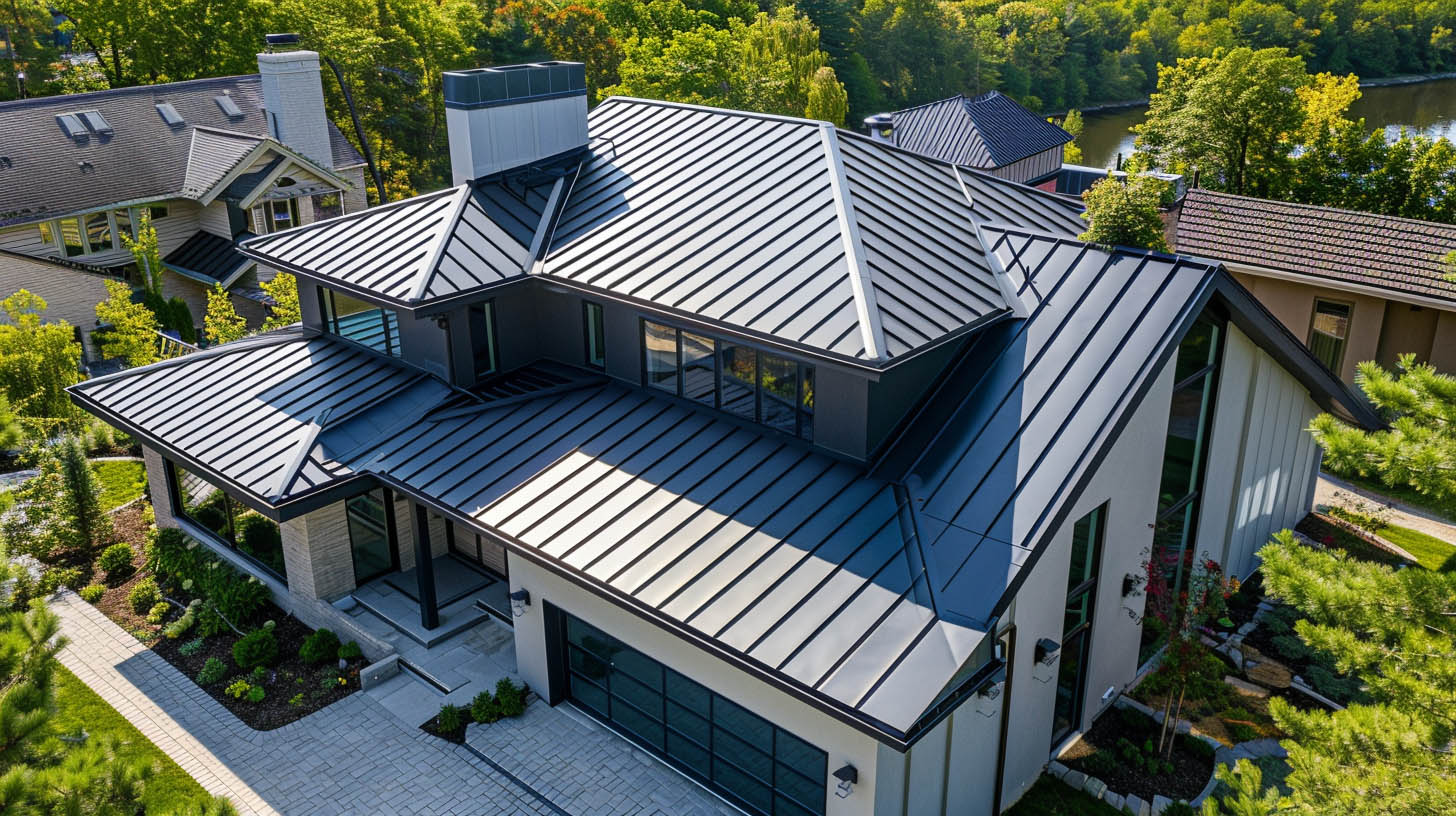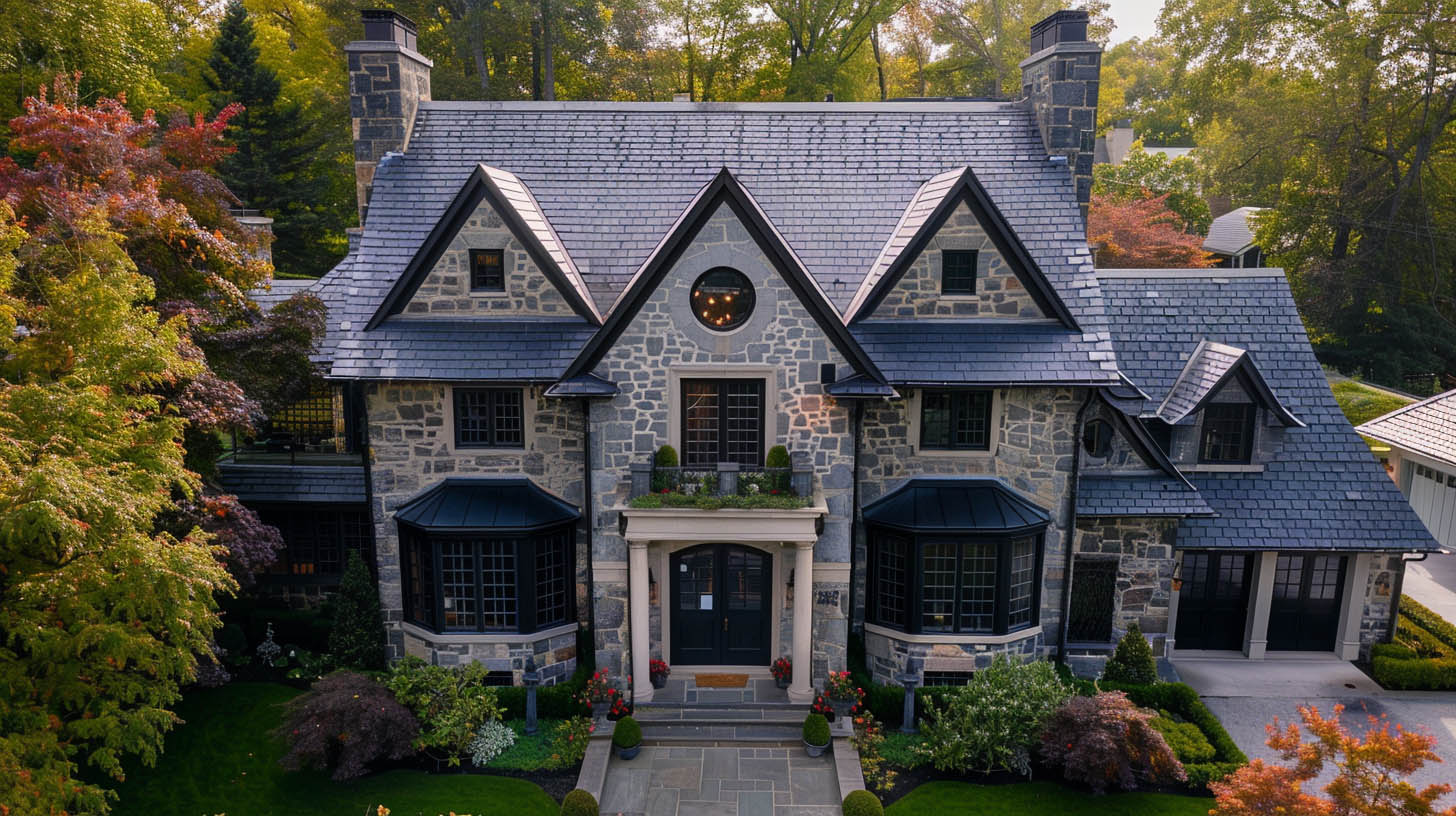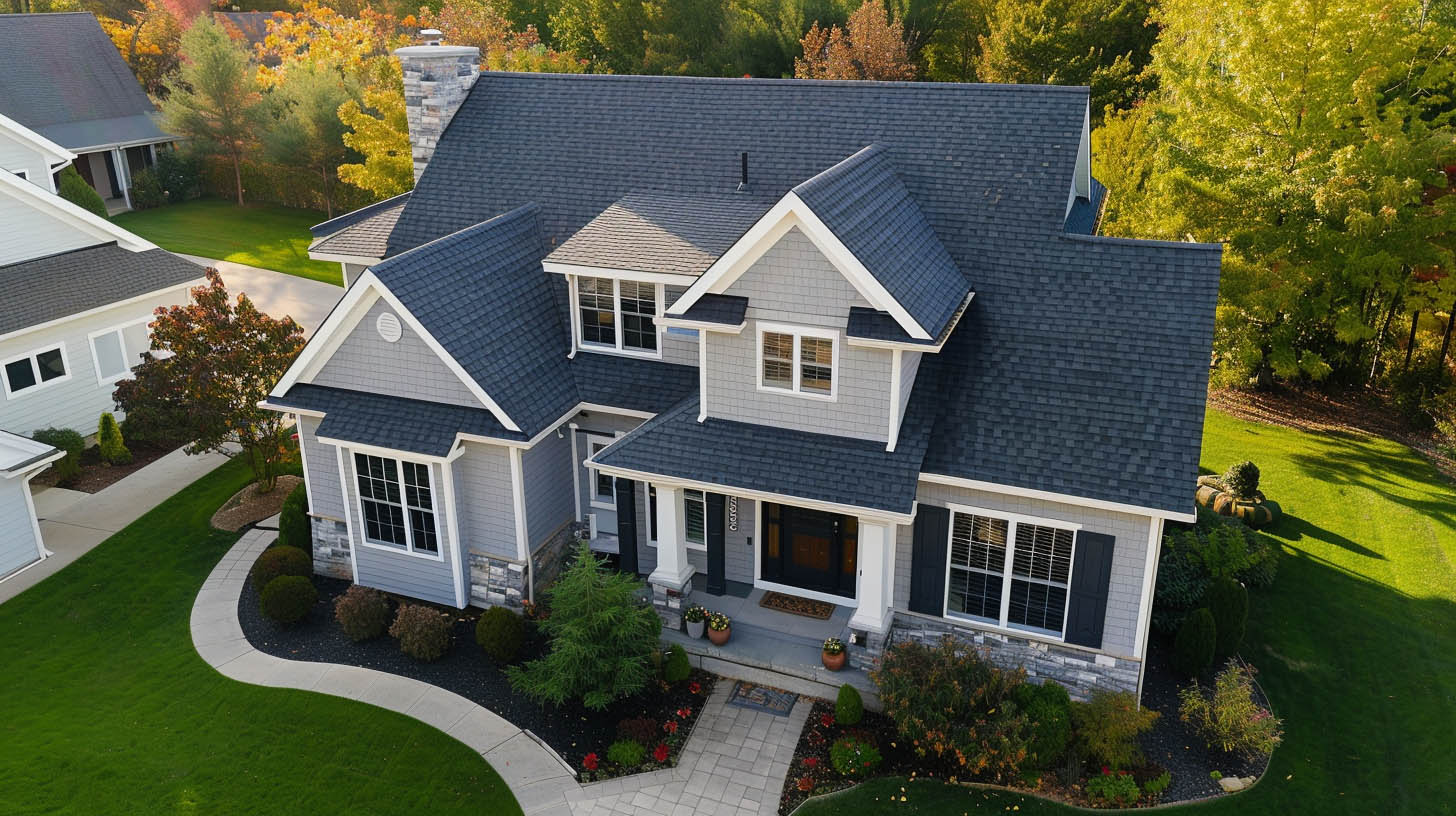
Gable Roofs: Classic Charm with Functional Benefits
Gable roofs, recognized for their triangular shape, are a quintessential symbol of American residential architecture. Their steep pitch not only contributes to a classic aesthetic but also offers practical benefits, making them a favored choice for regions with heavy rainfall or snow.Advantages
- Effective Water and Snow Shedding: The steep slope facilitates quick drainage, reducing leakage risks.
- Cost-Efficiency: Simple construction translates to lower initial and maintenance costs.
- Added Space: Provides additional attic or loft space, enhancing the home’s utility.
Disadvantages
- Wind Vulnerability: In high-wind areas, the risk of damage is heightened due to potential uplift.
- Structural Risks: Incorrect frame construction can lead to potential collapse.
Material Recommendations
Asphalt shingles and metal roofing are optimal for gable roofs, offering durability and cost-effectiveness. Metal, in particular, excels in longevity and wind resistance.Hip Roofs: Stability and Elegance
Hip roofs feature slopes on all four sides, converging at the top. This design not only enriches the home’s visual appeal but also enhances its stability, especially in windy locales.Advantages
- Enhanced Stability: The four-sided slope design offers superior wind resistance.
- Efficient Drainage: Slopes allow easy runoff, mitigating water damage risks.
Disadvantages
- Higher Costs: The complexity of design leads to increased material and labor costs.
Material Recommendations
Shingles, tiles, and metal roofing suit hip roofs well, with metal standing out for its energy efficiency and ease of maintenance.Mansard Roofs: Versatile and Spacious
Originating from French architecture, mansard roofs boast a unique two-sloped design on all four sides, offering additional living space and a distinctive appearance.Advantages
- Extra Space: Ideal for attic conversions or adding another story.
- Architectural Appeal: Allows for decorative embellishments and window dormers.
Disadvantages
- Snow Accumulation Risks: The lower slope may not efficiently shed snow.
- Cost and Complexity: High material and labor costs due to intricate design.
Material Recommendations
Slate and metal roofing are preferred for their aesthetic and functional benefits, with metal providing ease of snow shedding.Gambrel Roofs: Traditional Aesthetics with Practical Space
Gambrel roofs, reminiscent of barn architecture, feature two sloped sides, offering a classic look and extra storage or living space.Advantages
- Ample Space: Suitable for attic or upper floor expansions.
- Distinctive Style: Adds a traditional charm to the property.
Disadvantages
- Structural Vulnerability: More prone to damage from heavy snowfall or high winds.
- Maintenance Requirements: Regular inspections are necessary to prevent potential issues.


